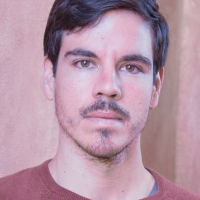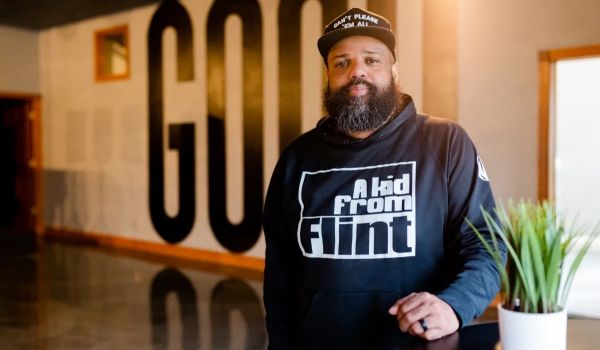All across the U.S., state, county and city governments are making big transitions in the way they help people from disadvantaged communities get jobs. It’s a paradigm shift spurred on by 2016 rulings on a federal workforce law, called the Workforce Innovation and Opportunity Act, aimed at uniting public job centers with federal services like Temporary Assistance for Needy Families (TANF) and community-based social groups so that they can have a way bigger impact on those they serve.
But as the new replaces the old, there are bound to be some growing pains. In Dayton, Ohio, the capital of Montgomery County, state workers there are fighting to sustain a youth employment program that’s been up and running for 17 years in the face of severe budget cuts, while the state is pushing a new, WIOA-savvy employment program its 88 counties will largely have to build up and run on their own.
The youth program, called YouthWorks, was funded by federal TANF funds, but between 2016 and 2017 those dollars are going to dive by more than half in Ohio — from $641 million down to $318 million. The state’s new Comprehensive Case Management and Employment Program, which started in August this year, is meant to partially fill that gap, and Shelly Hoffman, spokesperson for Ohio’s Office of Human Innovation, says it will do more for youth in cities like Dayton than the YouthWorks program ever could have.
YouthWorks, for example, puts youth ages 14 to 24 into the hands of local industries or employers for eight weeks over the summer, and youth often get to choose which industries those are. Whether that’s placement with editors at the Dayton Daily News or local manufacturers like Paradigm Industries, in 2015 the program gave more than 1,700 kids from families living below the federal poverty threshold a chance to learn job skills from more than 450 employers, and get paid while doing it.
But there’s one big issue: The Montgomery County Department of Job and Family Services says it doesn’t keep track of how many of those teens sustain work after the program ends. So there’s no real quantifiable data to give a snapshot of what this eight-week-long program does for disadvantaged youth’s career viability in the long term, far after the bell rings on the final day of high school.
CCMEP, on the other hand, will run and reassess its programs based on job placement data. It targets job seekers ages 16 to 24, and assigns individuals with a caseworker for an entire year to help clients build a career-ready work profile — something that previously incarcerated residents or youth from low-income families living in minority-majority areas like Dayton’s Miami Chapel area may have never had access to in the past.
“This new program wouldn’t only provide the same experiences as the summer program, but it will go further,” says Hoffman. “But as this is brand-new, we’re going to evaluate our progress and we’re going to work with our local partners. [We’re] in dialogue with all the county services about the youth program, looking into additional ways to accommodate them.”
Montgomery County is getting $4 million to roll out the first phase of its CCMEP program. The state as a whole is taking the $45 million previously allotted for the YouthWorks program and offering it as CCMEP-only funds for each of the state’s counties, according to Mark Anderson, marketing coordinator at the Montgomery County Department of Job and Family Services.
Anderson says his county welcomes the new focus on long-term career building that CCMEP offers. His department recently announced it was investing $10 million into renovating its main job center in the heart of Dayton to turn it into a “one-stop shop” for TANF families, job seekers and youth interested in employment opportunities. This is the type of service-blending that WIOA’s recent rulings hope to replicate across the country.
But he’s still struggling to find the logic in why the state’s CCMEP legislation bars any of those funds from specifically sustaining the YouthWorks program. The legislation allows for each county to take from their CCMEP funds and create youth summer initiatives, but after 17 years of building job-placement infrastructure and relationships through the YouthWorks program, he doesn’t see pulling the plug on the old program as a smart way for transitioning into the new.
“We’ve had a super successful program,” he says. “In a lot of the smaller counties, youth are already working. Those are smaller communities, and … it’s harder for someone in a city like Dayton to find a position in a job as a youth, compared to someone in Mentor, Ohio, where the community is [more tightly knit].”
A handful of billion-dollar companies have set up shop in Dayton in the past few years, like Procter and Gamble, Spectrum Brands Global Auto Care, and NuVasive, and Anderson says without a similarly strong youth program in place, Montgomery County is risking a major gap among young, trained workers to benefit these companies in the next decade.
“My point is that if you take away this program, and kids aren’t given the same chances to move forward as they would have been [with YouthWorks], in three to four years we’re not going to have a strong local workforce to support those companies,” he says.
Through the YouthWorks program, participants were allowed to work 20 hours a week, get paid $8 an hour, and Montgomery County would cover workers comp costs for the employers. With the CCMEP, the state government is still trying to herd all the counties and major social service organizations together to lay out a framework of how it will run on a county-by-county basis. All talk of its success is premature, as there won’t be any clear data on how effective the program is until this time next year, according to Hoffman.
But that’s also why it’s still a bit too early to say CCMEP might be worse than YouthWorks. Another point of contention that new federal legislation like WIOA is trying to remedy is the severe data drought shrouding approaches to workforce development in the past. While public job centers often measured internal metrics — how many students received resume training, how many students graduated a certain program — they often failed to really track the long-term effects these programs have on job seekers’ lives. A 2011 study by the U.S. General Accountability Office found that of 47 workforce services it monitored across the country, which operated with a total budget of $18 billion in 2009 alone, only a “few have had an impact study completed since 2004.”
If there’s one thing that’s certain about the CCMEP, it’s that the state will make sure it can now start to measure just how influential these state and federal funds are on the Ohio communities that need access to career jobs.
“Right now there’s no case management that goes on with YouthWorks. You get a job for the summer, and that’s most of it. With the state program, we want to wrap services around an individual to better move them on a path to meaningful employment. In some instances that might mean training for their GED, or even beyond that, other credentials and coaching [for job readiness],” says Hoffman. “We don’t want to leave anyone behind.”
The Equity Factor is made possible with the support of the Surdna Foundation.

Johnny Magdaleno is a journalist, writer and photographer. His writing and photographs have been published by The Guardian, Al Jazeera, NPR, Newsweek, VICE News, the Huffington Post, the Christian Science Monitor and others. He was the 2016-2017 equitable cities fellow at Next City.

















